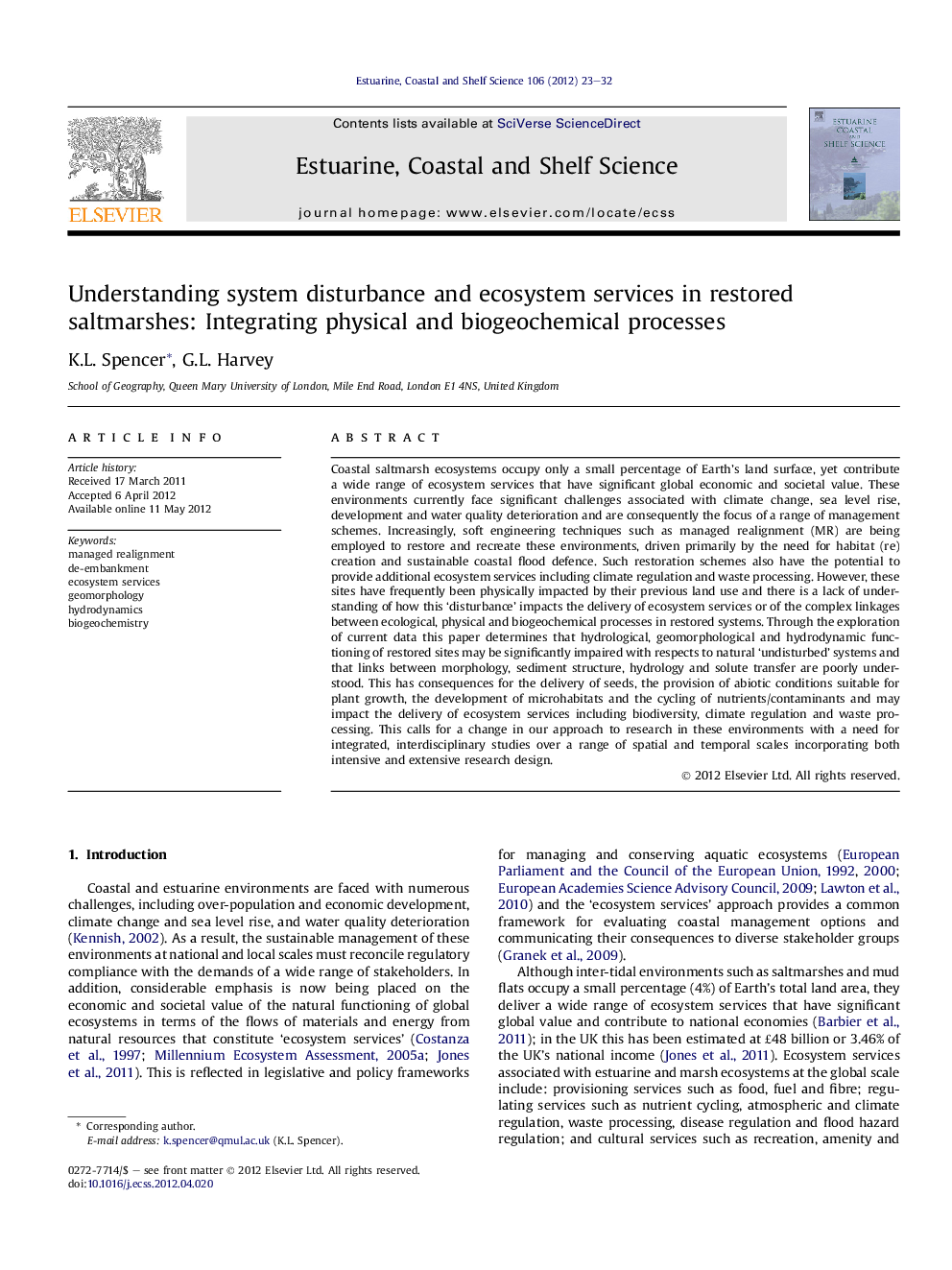| Article ID | Journal | Published Year | Pages | File Type |
|---|---|---|---|---|
| 4540186 | Estuarine, Coastal and Shelf Science | 2012 | 10 Pages |
Coastal saltmarsh ecosystems occupy only a small percentage of Earth's land surface, yet contribute a wide range of ecosystem services that have significant global economic and societal value. These environments currently face significant challenges associated with climate change, sea level rise, development and water quality deterioration and are consequently the focus of a range of management schemes. Increasingly, soft engineering techniques such as managed realignment (MR) are being employed to restore and recreate these environments, driven primarily by the need for habitat (re)creation and sustainable coastal flood defence. Such restoration schemes also have the potential to provide additional ecosystem services including climate regulation and waste processing. However, these sites have frequently been physically impacted by their previous land use and there is a lack of understanding of how this ‘disturbance’ impacts the delivery of ecosystem services or of the complex linkages between ecological, physical and biogeochemical processes in restored systems. Through the exploration of current data this paper determines that hydrological, geomorphological and hydrodynamic functioning of restored sites may be significantly impaired with respects to natural ‘undisturbed’ systems and that links between morphology, sediment structure, hydrology and solute transfer are poorly understood. This has consequences for the delivery of seeds, the provision of abiotic conditions suitable for plant growth, the development of microhabitats and the cycling of nutrients/contaminants and may impact the delivery of ecosystem services including biodiversity, climate regulation and waste processing. This calls for a change in our approach to research in these environments with a need for integrated, interdisciplinary studies over a range of spatial and temporal scales incorporating both intensive and extensive research design.
Graphical abstractFigure optionsDownload full-size imageDownload high-quality image (184 K)Download as PowerPoint slideHighlights► MR may provide ecosystem services such as climate regulation and waste processing. ► Ecosystem functioning in MR is significantly impaired compared to natural sites. ► Links between morphology, hydrology and solute transfer are poorly understood. ► This impacts seed delivery, development of microhabitats and biogeochemical cycling. ► Ecosystem services such as biodiversity and climate regulation may be impaired.
